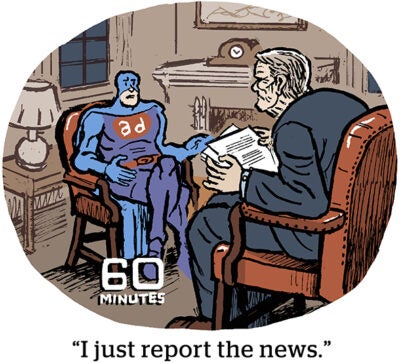“On TV & Video” is a column exploring opportunities and challenges in advanced TV and video.
Everyone is getting into streaming. Even ad networks are launching their own streaming networks.
In May, Columbia-based company Adsmovil, which started life in 2012 as a mobile ad network helping US brands connect with Hispanic audiences, announced plans to launch an ad-supported streaming service called Nuestra.tv.
Why? The demand is there, said Adsmovil CEO Alberto Pardo, who noted that CTV adoption in Latin American markets is starting to resemble that of the smartphone 10 years ago.
The advent of mobile penetrated LATAM markets much faster than in the US, he said, and became the region’s “first screen” for media consumption because of the low cost compared with TV hardware. Now, over-the-top video both on mobile and the big screen is quickly catching up.
And now video advertisers are waking up to Hispanic audiences, including outside of LATAM. Buyers want to reach them, and they’re willing to spend. Problem is, “there’s a lack of supply of Spanish-language video content targeting Hispanics in the US,” Pardo said. “We decided to try filling that gap.”
Pardo and Adsmovil CMO Maria Twena spoke with AdExchanger.
AdExchanger: How is Adsmovil approaching streaming?
ALBERTO PARDO: Nuestra.tv will be an ad-supported video-on-demand (AVOD) service that’s free of charge to bring in viewers, because whoever might’ve been willing to pay likely already has another subscription.
For now, we’re focused on getting the next approvals from and launching on the different platforms we’re working with, including OEMs like LG. From there, we’ll start making releases. It’ll only be available in the US for at least the first six months.
We’re in the early stages, though. Adsmovil is an ad tech company built on digital ads and has never been a content company. This is new for us – it’s sort of like a beta test.
What audience data is Nuestra.tv starting out with?
PARDO: Adsmovil’s mobile network reaches 27 million people a month in the US. Our platform also ingests contextual data, which we use to enrich the deterministic first-party data already in our DMP.
Once Nuestra.tv is released, we’ll also pull in data ingested from the OTT service.
And we only use our own first-party data to identify our audience – we don’t use any third-party data.
How will Adsmovil approach CTV ads, and how do you expect to monetize?
PARDO: We want to monetize without being too interruptive.
In addition to traditional spots, we’re also looking into different ad formats, including sponsorship deals and product placement.
We expect programmatic buying to be a big chunk of the equation, but direct deals will also be really important for more customized buys like brand integration.
There’s a huge opportunity for brands that can target Hispanic audiences through content, particularly video that reaches real Hispanic viewers. And the money is there – advertisers are demanding it like crazy. I expect Nuestra.tv to make up the majority of Adsmovil’s revenue in about two years or so.
Let’s be real – the streaming space is absolutely swamped with competition. How will Nuestra.tv stand out?
PARDO: US-based streamers like Roku might have a couple dozen titles of Spanish-language content, but that’s not where most viewers are going for that content, because a Hispanic streamer built for a Hispanic audience will always have more of it.
Other Spanish-language OTT services like Univision and Telemundo are doing great. But those tend to target a Spanish-first audience, whereas we’re trying to reach a bicultural, bilingual demographic – it’s the most relevant audience because it’s the largest, and it’s the focus that’s going to set us apart.
MARIA TWENA: If you look at the Hispanic population in the US today, 67% of that market is US-born. Of that, 55% are considered generation 1.5, meaning they moved to the US when they were 10 years old or younger, and their primary socialization is also taking place here in the US.
Like all children of immigrants, this younger generation dances in both worlds – they’re interpreting and translating US ethos for their parents, and informing brand and product purchases at a very early age.
What does targeting a bicultural audience look like in practice?
TWENA: Targeting a bicultural Hispanic audience is more than just English with Spanish linguistic or cultural cues. The ethos has to be reflected in the messaging. Socialization impacts acculturation and levels of assimilation. Understanding that guides the best way to talk to different generations.
First-generation Hispanic people that moved to the US are all about family and community, so an insurance company targeting that audience might say, “This offer is for your family,” for example.
But when you look at the second generation or generation 1.5, now you’re talking to a bicultural individual who is just as much American as they are Latino. That same insurance company might change their messaging to say, “This offer is for you” or “This offer is for you and your family,” instead.
PARDO: Adsmovil also has the ability to target based on country of origin, which is essential for brand messaging.
Latin America is not just one population, but 32 entirely different realities, and messaging based on country of origin creates a stronger emotional connection with second- or third-generation Hispanic Americans, too.
This interview has been edited and condensed.

















